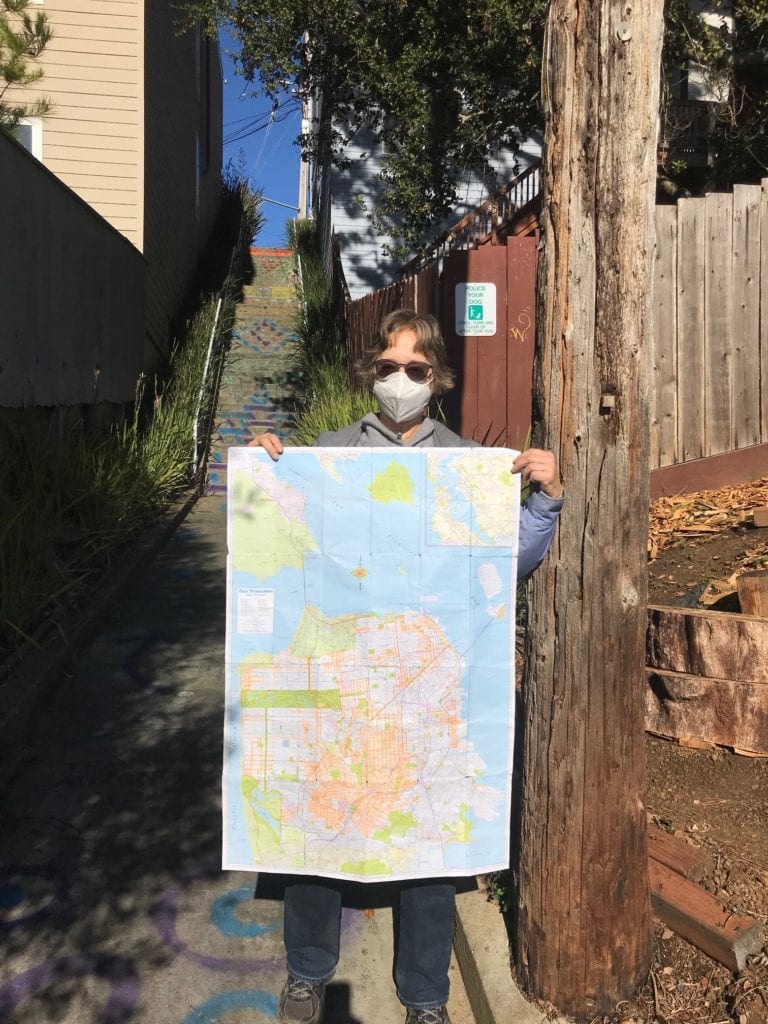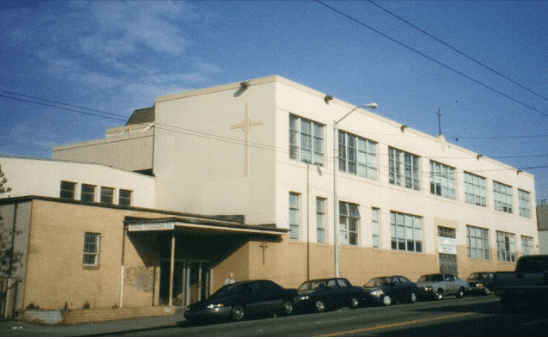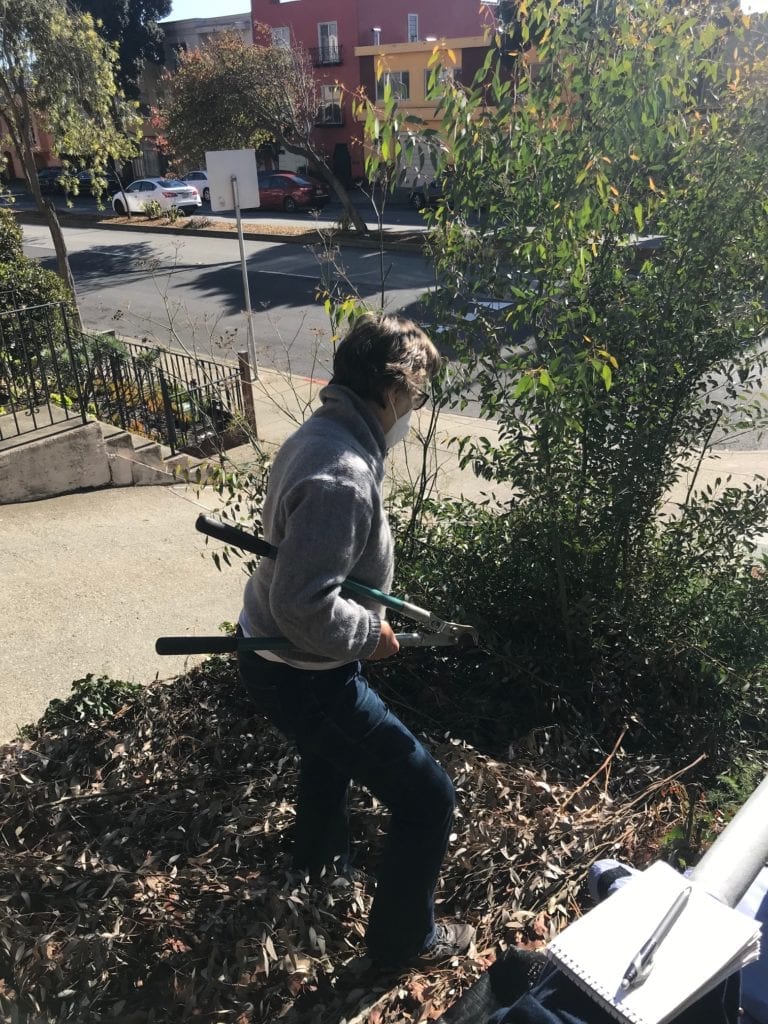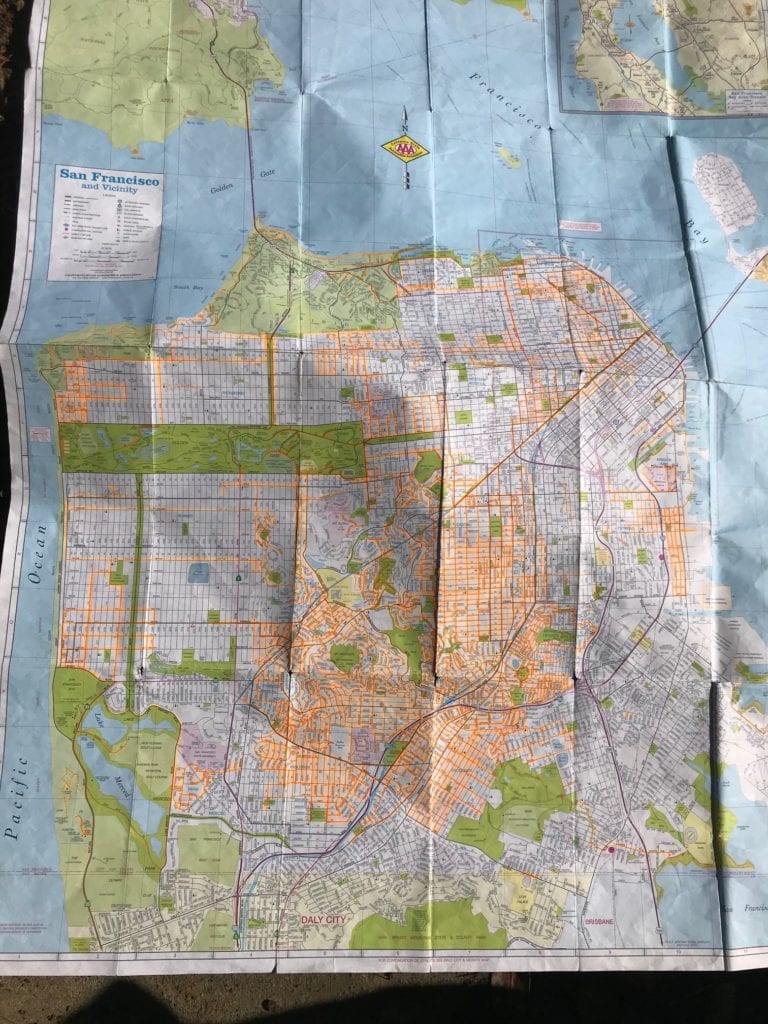
As we near the one-year anniversary of pandemic quarantines, lockdowns and stay-at-home orders, many of us have come to know what lies out our own front doors better. We’ve gone for walks close to home, hoofed it to stores we might once have driven to and generally focused on local neighborhoods.
But however deeply we delve into Glen Park and environs, the palimpsest that Joy Durighello, 68, sees brings a richness that she recently shared with News.
Her roots go back more than 60 years and the changes she’s seen make a few slow streets added here and there seem like nothing.
The Durighello family home was originally at 580 Bosworth Street.
“Our Bosworth house was built by an Italian builder in the 1930s and there was a wine cellar in the basement in addition to a recess in the floor of the garage where someone could work while standing up on the undercarriage of a car.”
Google map it, though, and you’ll just find it’s where the Glen Park BART parking lot now stands. That’s because in 1964 San Francisco seized the land their house stood on under eminent domain. The house itself was relocated to the Bay View, she told the Glen Park News on December 14.
Remarkably, it wasn’t the first time. In 1956 the City commandeered the flat the family rented on 17th Street near Guerrero Street to make way for the Columbia Park Boys and Girls Club that still fronts Guerrero.
Their origin story is one familiar to all immigrants. Her father Romolo emigrated to San Francisco from Northern Italy. He came in 1922 at 17 years old to work, which he first found in a lumberyard in Weed, California lumber yard near Mount Shasta, then in San Francisco as a dishwasher at North Beach’s Vanessi’s restaurant and eventually ownership of Caruso’s on Taylor Street. He ended up working until his seventies as a delivery man for iconic San Francisco bakeries such as Boudin and Parisian.
His wife Maria arrived in 1950. Mostly a homemaker, she also collected subscription money for the San Francisco Call Bulletin, a storied paper that published from 1856 to 1965.
To avoid further moves, the couple purchased their Martha Avenue home when Joy was 11 and her brother Paul was 13.
She attended St. John the Evangelist’s Grammar School through the eighth grade, back when it was across the Bernal Cut at St. Mary’s Avenue and Marsily Street.

Next came the now-closed St. John Ursuline Girls Catholic High School at Mission and Bosworth Streets. The school closed around 1990 but still holds yearly events for alumnae. At the time San Francisco had eight all-girl high schools, their alumni website notes.
Durighello found a child’s delight roaming Glen Park, a free-range young girl who today would ring officialdom alarm bells. The neighborhood was much wilder than today.
On Martha Avenue around 1965 lots remained empty and automobile traffic was practically nonexistent.
“Today, by comparison, streets such as Congo are like one lane tunnels where cars have to stop for one another and let others pass,” she said.
There were many more butterflies then, she said. “There were swallowtails, buckeyes, admirals, probably because there were so may undeveloped city lots and other open spaces.”
Once, when she was six or seven, she remembers seeing a white horse on the Glen Park hillside close to Portola.
“Kids used pieces of cardboard to slide down the slope between San Jose Avenue and Bosworth. Part of the slope is still there, just past the 280 overpass,” she said.

Walking to school she passed the Ray Oil Burning Company on San Jose Avenue between Milton and Rousseau Streets. A metal sign affixed to the brick façade offered a $25 reward for information leading to the arrest of anyone vandalizing the red brick. “I used to dream about what I could buy with $25!” she said.
She went on to earn a BA from Berkeley in Italian and French, then a MA in Teaching English as a Second Language at San Francisco State University, which led to a position teaching English at City College for more than 25 years.
One of her pandemic plans, launched in April, was to walk every street in San Francisco. Her habit of walking dates back to the 1990s when she would find herself circling and circling looking for parking near City College.
“Why am I doing this?” she wondered. Borrowing a page from her childhood Glen Park rambles she decided to walk to work, a habit she kept up for 25 year going to City College until she retired in 2017.
“It’s easy, needs no planning or equipment, costs nothing, and almost always pays off with visual stimulation of interesting chance encounters,” she said, “I’ve met so many neighbors while walking to work over the years, even being invited to their parties.”

During the pandemic she spends time caring for her 100-year-old mother and working on sprucing up the 186 treads of the Detroit Street stairs — steps she trod every day on the way to and from work. She’s been volunteering to help keep the stairs looking good twice a week.
All the journeys begin from her front door on Martha Avenue and they’ve taken her far and wide — and taught her that not all neighborhoods are created equal.
The Outer Sunset District, for instance, can be as mind-numbing as counting grains of sand, which is what the tightly packed and nondescript row houses are built upon.
“I prefer quirkiness,” she said. “I look forward to exploring Bernal Heights or Precita Park, which have narrow roads, lots of hills and views, interesting architecture, cul de sacs and alleyways, little surprise staircases, and small, family-owned businesses.”
She’s got a few more areas to finish up before her peregrinations are through, including the Outlands of the Richmond and Marina Districts, the hills of Pacific Heights and Russian Hill.
And she’s found that traveling through space can sometimes feel like traveling through time.
“I didn’t know I’d enjoy the Excelsior as much as I have,” she said of the neighborhood just south of us. People still sit in front of their homes, there are unique houses and it’s bubbling with demographic diversity.
“It reminds me,” she says, “of Glen Park growing up.”

